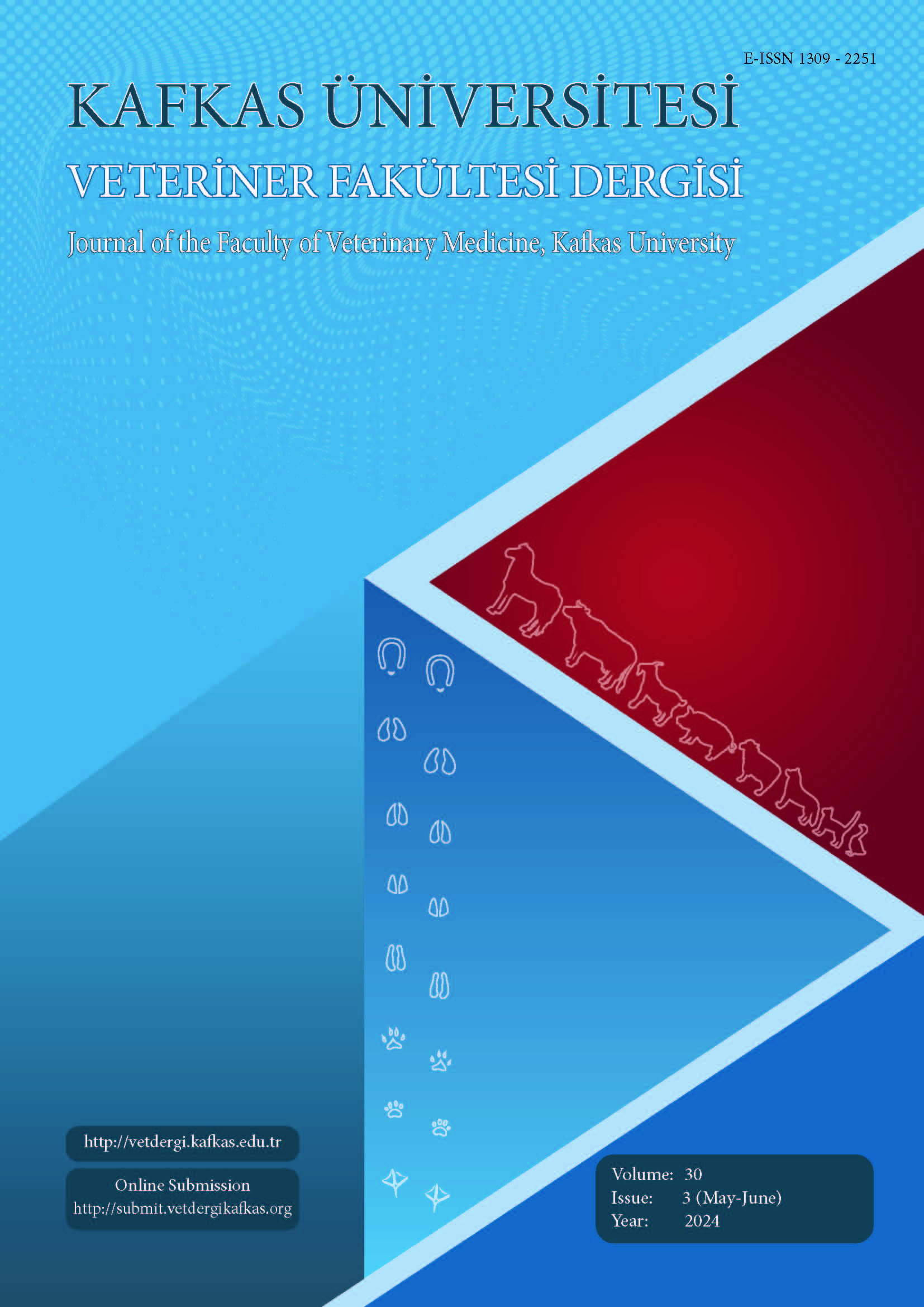Kafkas Üniversitesi Veteriner Fakültesi Dergisi
2024 , Vol 30 , Sayı 3
Immunohistochemical Localization of Leptin and Ghrelin in Kidney Tissue of Capsaicin Administered Diabetic and Non-diabetic Rats
1Kafkas University, Faculty of Medicine, Department of Histology and Embryology, TR-36000 Kars - TÜRKİYE2Kafkas University, Faculty of Veterinary Medicine, Department of Histology and Embryology, TR-36000 Kars - TÜRKİYE DOI : 10.9775/kvfd.2023.31202 In this study, we investigated the effect of Capsaicin (CAP) on leptin and ghrelin expression in diabetic kidneys by immunohistochemical method. The subjects were separated into 5 groups: control, sham, diabetes, CAP, and D+CAP. Streptozotocin (45 mg/kg, single dose) was administered to each rat in the diabetes and D+CAP groups intraperitoneally. Rats with blood glucose levels of 200 mg/dL or higher were considered diabetic. Capsaicin (1 mg/kg) was administered subcutaneously to the rats in the CAP and D+CAP groups every day for 2 weeks. H&E, PAS, and Crossman"s Triple staining were performed to examine the histology of the kidney. Leptin and ghrelin in the kidney were examined by immunohistochemical method. Histological examination revealed normal kidney tissue in the control, sham, and CAP groups. The diabetes group showed the glomerulus with scattered and narrowing of the Bowman"s capsule. While leptin immunoreactivity was most intense in the diabetes group, it was observed the weakest in the CAP and D+CAP groups. While strong ghrelin immunoreactivity was seen in the control and sham groups, mild immunoreactivity was seen in the CAP group, and weak immunoreactivity was seen in the diabetes and D+CAP groups. In this study, we concluded that the application of CAP could prevent loss of appetite by reducing the leptin expression during diabetes, but could not protect ghrelin from adverse effects of diabetes. Anahtar Kelimeler : Capsaicin, Diabetes, Ghrelin, Immunohistochemical, Leptin











